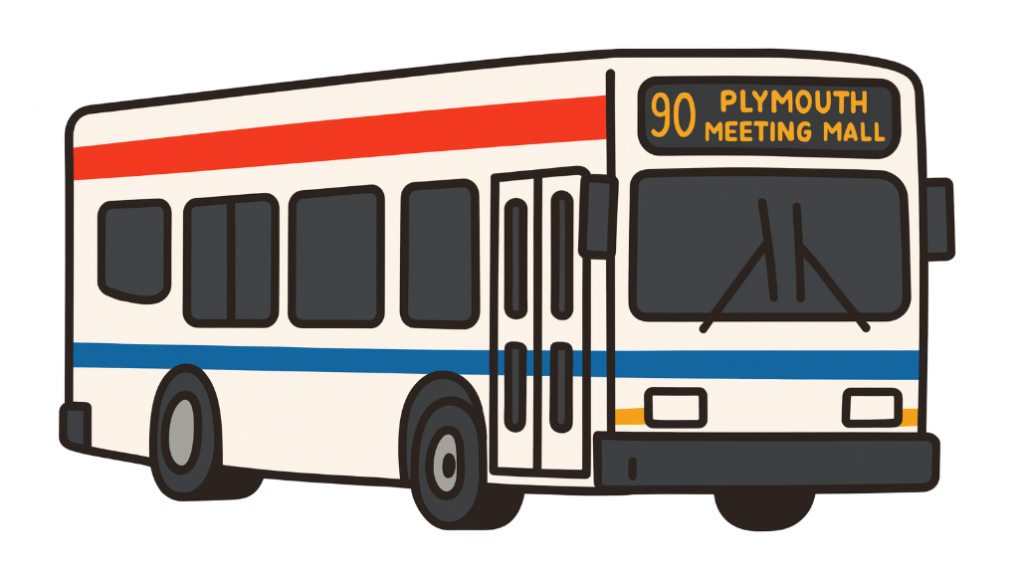
Zero-Fare Transit: Can Free Buses Improve Public Health?
I’m a Philly guy, and our public transportation system is a mess. There’s a lot of reasons for that, but I doubt you’ll find anyone who is satisfied with SEPTA. And this is a negative for public health throughout the city.
But this happens in other cities, too.
On a humid July morning in Kansas City, Rosa waits at her neighborhood bus stop. She works two jobs and cares for her elderly mother. Before 2020, she sometimes skipped medical appointments because the bus fare—even just a couple of dollars—added up quickly. Today, Rosa boards without reaching for her wallet. That small change could mean a healthier future, not just for her but for thousands of Kansas City residents.
In 2020, Kansas City, Missouri, became the first major U.S. city to eliminate bus fares citywide. Known as zero-fare transit, the policy was designed to ease financial burdens and improve equity in a city where life expectancy can vary by up to 17 years between neighborhoods. But can free buses really make people healthier? Researchers from the University of Missouri–Kansas City and national partners are putting this question to the test.
Why Transit Matters for Health
Public health leaders have long argued that transportation is a social determinant of health. Access to reliable, affordable transit doesn’t just get people to work. It can mean:
- Walking to and from bus stops—boosting daily physical activity.
- Reaching grocery stores with healthier food options.
- Attending medical appointments and filling prescriptions.
- Saving money for essentials like rent and nutrition.
But until now, most research has focused on building new rail or bus lines, often in higher-income neighborhoods. Findings have been mixed—sometimes showing increases in physical activity, sometimes no measurable change. What’s been missing is large-scale evidence on how removing fares altogether affects health, especially in low-income communities.
The Zero-Fare Bus Transit (ZBT) Study
The Kansas City Zero-Fare Bus Transit (ZBT) study is a natural experiment—tracking what happens when a major policy shifts overnight. Funded by the NIH and EPA, researchers are studying the impacts across seven years (2017–2024) with two big aims:
- Compare ridership trends in Kansas City against nine similar U.S. cities that did not adopt zero-fare.
- Track health outcomes among Kansas City residents, comparing zero-fare bus riders with non-riders.
Key measures include:
- Body Mass Index (BMI) and cardiometabolic markers (like blood glucose, blood pressure, cholesterol).
- Physical activity, tracked with accelerometers and GPS.
- Economic barriers, such as skipping meals or medications due to cost.
What’s at Stake for Communities
This research could reshape how cities think about public transit as a public health intervention. If results show that free buses increase physical activity, improve diet, or reduce medical barriers, the case for expanding zero-fare policies nationwide will strengthen.
For Kansas City, the stakes are especially high:
- Nearly 70% of riders identify as Black or Hispanic, groups disproportionately impacted by health inequities.
- Over 75% of riders earn less than $30,000 a year.
- Many households rely solely on buses for mobility
By removing fares, the city hoped to not only make life easier but also reduce inequities in access to health and opportunity.
Barriers and Questions Ahead
Of course, free transit isn’t a silver bullet. Policymakers and health departments will need to grapple with:
- Funding: Who pays for the loss in fare revenue? Kansas City offset costs through budget reallocations and partnerships.
- Safety and congestion: Could more riders strain systems or raise concerns about crime?
- COVID-19 confounders: Because zero-fare began during the pandemic, researchers must disentangle pandemic effects from policy effects.
The study also aims to see if there are unintended consequences—such as pedestrian accidents or transit-related safety issues—that public health leaders should anticipate.
Why This Matters Now
The U.S. faces rising rates of obesity, diabetes, and cardiovascular disease. Many interventions—like nutrition counseling or exercise programs—require individual motivation and ongoing costs. Zero-fare transit flips the script: it’s a policy-level intervention that changes the environment, not just individual choices.
As the authors note, large-scale system changes may be the most sustainable way to integrate health into daily life. And with many U.S. cities struggling with inequities in life expectancy, Kansas City’s experiment could set an example for others.
What’s Next
Results from the ZBT study will roll out as data collection concludes in 2024. If positive, this could fuel:
- Policy adoption in other mid-sized U.S. cities.
- New funding models for transit tied directly to health outcomes.
- Collaborations between health departments, city planners, and transportation authorities.
Join the Conversation
The Kansas City study is a window into how bold urban policies might close health gaps nationwide. For public health leaders, the questions now are:
- How could your agency or city use transit policy as a health intervention?
- What barriers—political, financial, cultural—might stand in the way of zero-fare?
- Does this research challenge how you think about equity in prevention?
Public health is often about meeting people where they are. Sometimes, that place is a bus stop.



